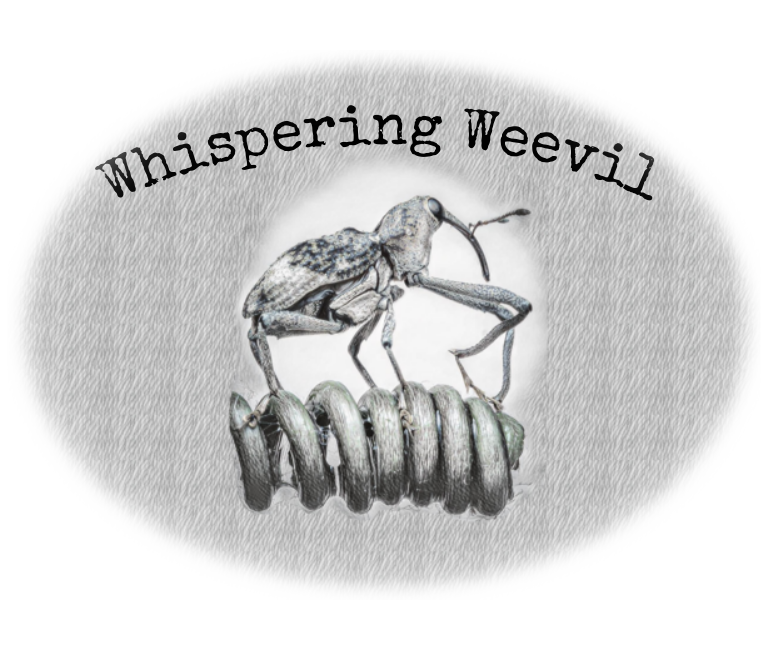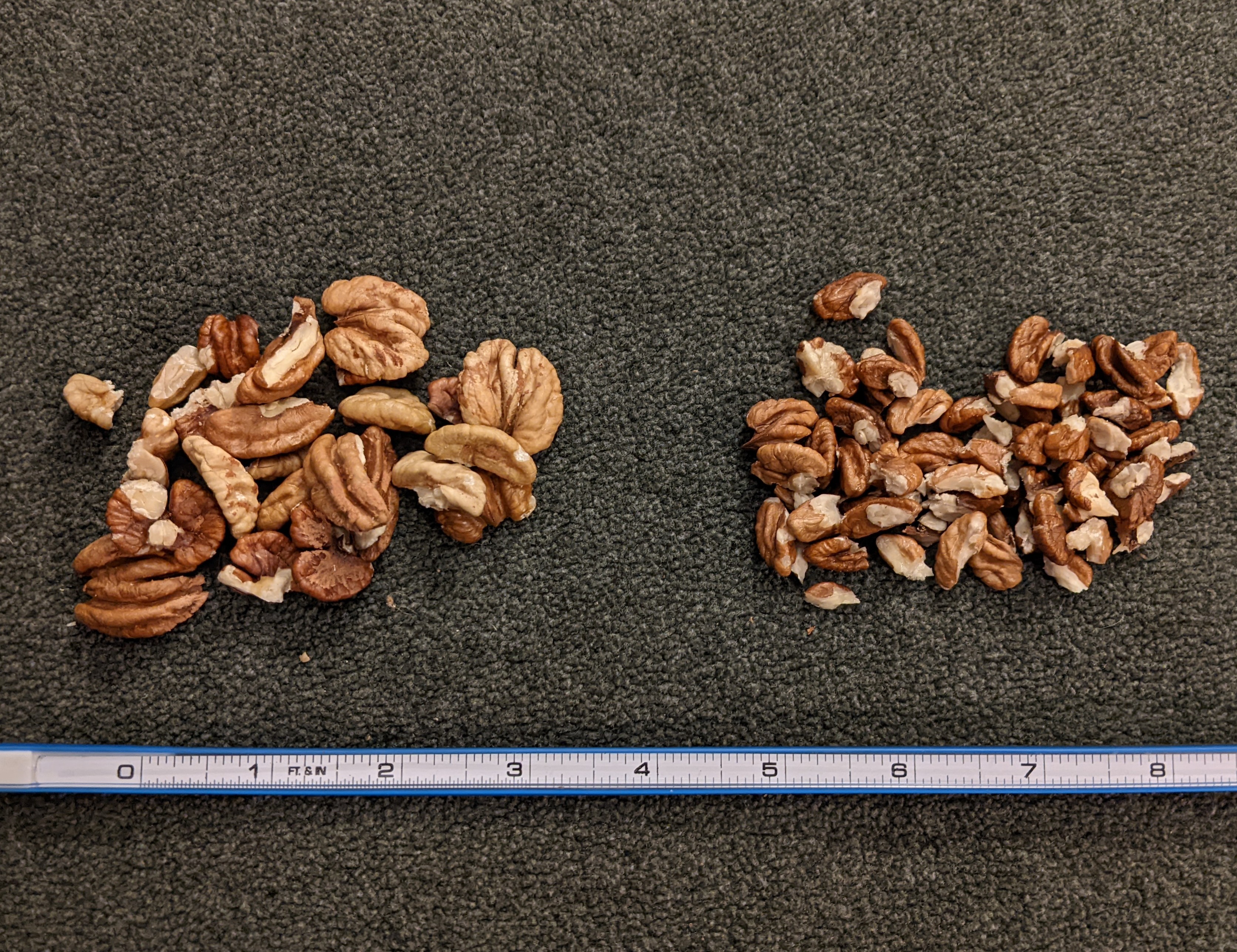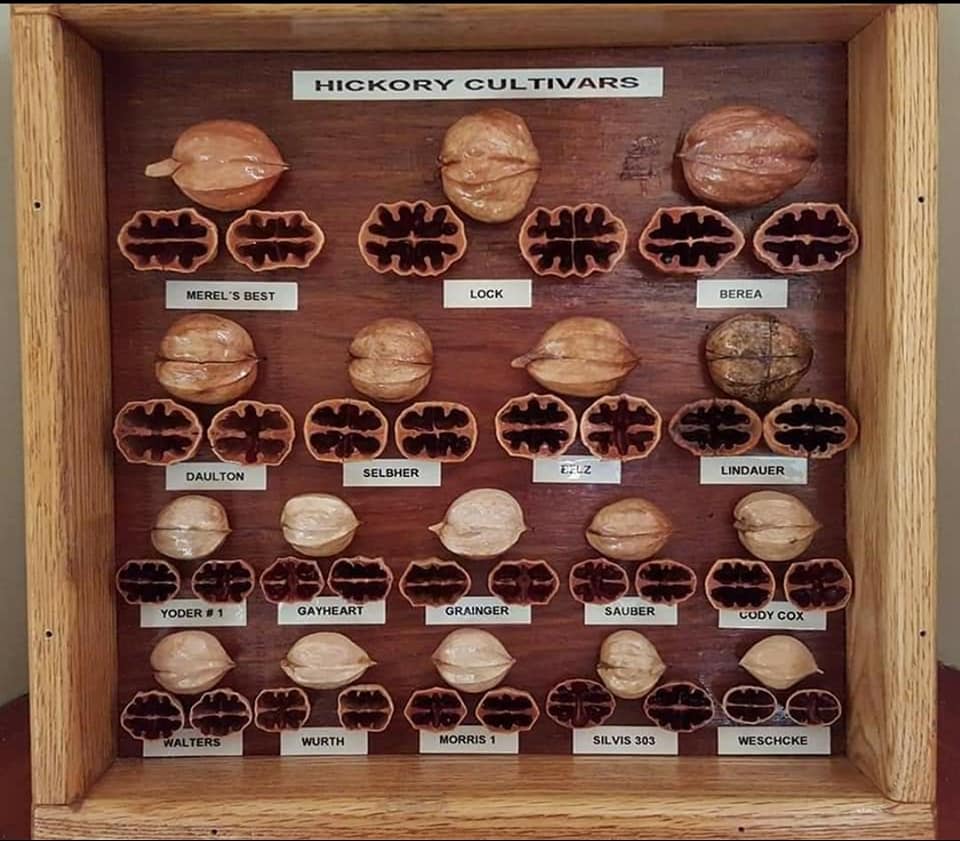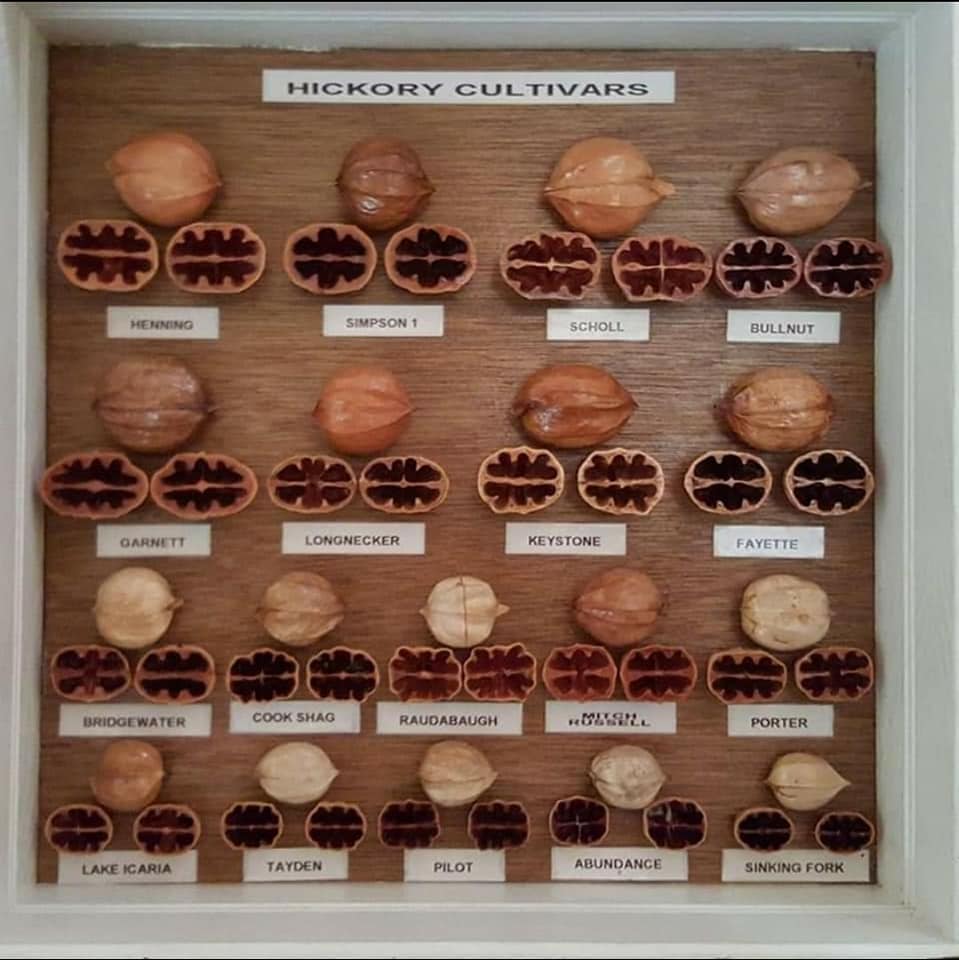

Appalachain forests are dominated by oaks and hickory trees. Hickory trees provide food and habitat for numerous animals as well as historically providing native Americans with sustenance. Pecan, a close relative of hickory, has attained the status of a global commodity, providing food for millions of consumers. Yet, hickory remains underutilized, relegated to farm borders and forests. We believe in the untapped potential of hickory and think there is value in documenting characteristics of established varietals, and promising new wild selections. Most named hickory cultivars are wild selections with superior qualities such as large size, thin shell, and free cracking nutmeat. The diversity of size, shape, shell thickness, and cavity shape can be seen in the display photos to the right. The size superiority and free cracking of nutmeats can be seen in the photo below, with large size free cracking nutmeats on the left and smaller nutmeats of typical hickories on the right.

Hickories of several species are commonly utilized. Shagbark hickory (Carya ovata), shellbark hickory (Carya laciniosa), bitternut (Carya cordiformis), and their hybrids constitute most of the named cultivars. Shellbark hickories are the largest hickories but often have thick shells. Shagbark hickories have thinner shells and are easier to crack than shellbark hickories. Bitternut hickories have very thin shells, but are full of tannins that make them inpalatable for fresh eating, yet they yield a nice oil when pressed. Hickory-pecan hybrids are known as hicans and usually have qualities intermediate of the two species.
Little effort has been expended on improving hickories. While many of the named cultivars come from wild selections, a few are the product of intentional breeding and cross pollenation within grafted orchards. One important component of breeding better hickories is to document desirable traits that can be selected upon. Nut kernel size, kernel percentage, shell thickness, freeness of cracking, and tree yield are commonly documented attributes. Other less frequently documented characteristics include weevil susceptibility, anthracnose susceptibility, flowering habit, precociousness, and ripening time. Systematic analysis of these attributes should be made in replicate plantings of grafted cultivar hickory trees to help identify trees for breeding and to improve recommendations for planting existing cultivars. Grafted hickory varieties that we are trialing are listed on the left. You can find cultivar descriptions and statistics by following the links.

